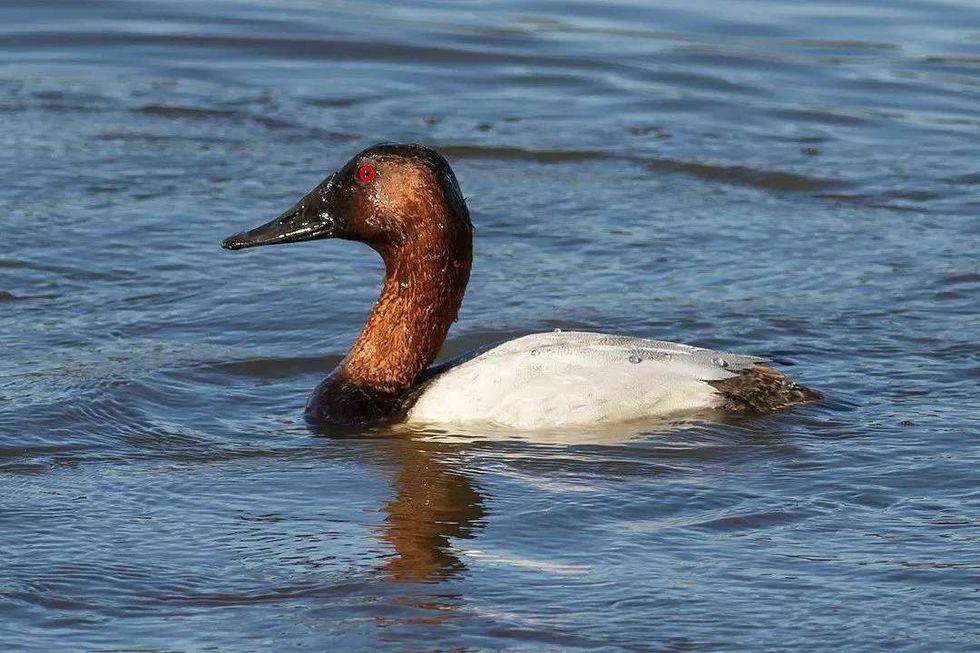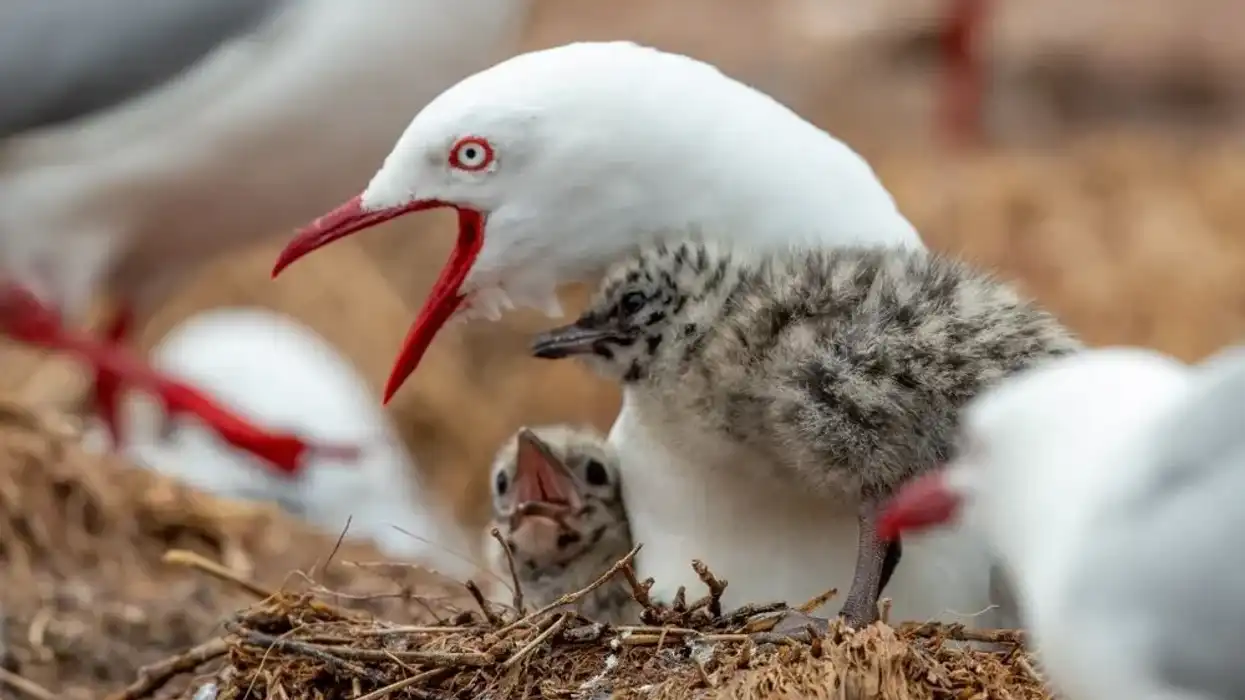Canvasbacks are the largest diving duck found in the world. These birds were named so because their back looked like a canvas with bright colors such as red and brown.
In other European languages such as Spanish and French, this bird is also called the white-backed duck. In Mexico, the canvasback is known as the 'pato coacoxtle.'
These ducks are migratory birds and move to warmer places towards the south of the North American continent during the fall and winter seasons. They are quite rarely sighted in Europe as well.
These birds are at risk due to the increasing destruction of their habitat, such as prairie marshes, potholes, wetlands, and freshwater lakes with dense vegetation. Therefore, conservation efforts are being made to protect the bird and its breeding grounds where it can find food and lay eggs comfortably.
The canvasback is also known as the 'Aristocrat of Ducks' due to its royal demeanor and elegance. Keep reading for more interesting facts about the canvasback!
If you liked this article about the canvasback, also check out the other articles with amazing facts about golden pheasants and common buzzards.
Canvasback Interesting Facts
What type of animal is a Canvasback?
A canvasback (Aythya Valisineria) is a type of duck.
What class of animal does a Canvasback belong to?
The canvasback (Aythya Valisineria) belongs to the Aves class of animals, with their Phylum being Chordata, order Anseriformes, and family Anatidae.
How many Canvasbacks are there in the world?
The exact population of canvasbacks (Aythya Valisineria, order Anseriformes, family Anatidae) in the world is not known.
Where does a Canvasback live?
Canvasbacks are North American birds primarily found in the countries of the United States of America, Mexico, and Canada. During spring, they are found in the central and northern parts of the continent, from Colorado to central Alaska. During winter, they are found in the southern region of the Great Lakes to Mexico.
What is a Canvasback's habitat?
Canvasbacks prefer the prairie marshes and potholes of North America as their habitats. In addition to the prairie marshes, they prefer breeding in woodlands, grasslands, or small lakes and marshy ponds with dense vegetation over the surface of the water.
Who does a Canvasback live with?
Canvasbacks are North American birds that are not very solitary but socialize a lot within the species. They mostly live together during the non-breeding season to ward off predators. These birds also fly together in large V-shaped flocks during migration.
How long does a Canvasback live?
The average lifespan of the canvasback species is 16-22 years in the wild. This is based on the age of the birds, which was recorded after they were captured.
How do they reproduce?
Canvasbacks are mostly monogamous birds, and their breeding season starts during the spring migration. Males exhibit a variety of courtship displays, including the neck stretch, sneak approach, and aggressive, inciting behavior.
Females start building their nests in late April and continue until June. The nests are built on top of floating vegetation above water and large wetlands as well.
Female canvasbacks lay up to 11 green-colored eggs. The females incubate the eggs for 24-29 days. After the eggs hatch, the young ducks start to forage and they fledge after 60 days.
What is their conservation status?
The International Union for Conservation of Nature (IUCN) has listed the canvasback as of Least Concern on their Red List. However, loss of habitat, pollution, physical accidents, and intense hunting have caused quite a decline in their numbers.
Canvasback Fun Facts
What do Canvasbacks look like?

Canvasbacks have a large body and a long, sloping profile. They have a red head and neck, and their head is wedge-shaped. They have black breasts and white-colored wings, bellies, and flanks.
Their tail feathers and bill are black, while their feet and legs are grey The male breeding body plumage is considerably more colorful than the female breeding body plumage, which is a subtle brown color. Females have brown-colored heads and necks while their chest, wings, and belly are white. Their tail and legs are dark brown.
How cute are they?
Canvasbacks are not very cute but they look quite majestic with their large bodies, sloping necks, and red-colored heads.
How do they communicate?
Canvasbacks are usually quiet ducks and make sounds only when necessary. They have a variety of distress calls when they are in danger. They also coo and make rattling sounds as a part of their courtship ritual. Male canvasbacks exhibit a peculiar behavior with their necks to attract a female.
How big is a Canvasback?
The average length of male canvasbacks is 20-22 in (51-56 cm), while the average length of female birds is 18-20 in (48-52 cm).
A giraffe is almost ten times the size of a canvasback as it is 16-20 ft (4.8-6.0 m) tall.
How fast can a Canvasback run?
While there is not much data about the speed of canvasbacks while they run, they are considered to be one of the fastest-flying ducks in North America. They have been recorded to fly up to 55mph during migration.
How much does a Canvasback weigh?
The male birds weigh more than the female birds as the average weight of male canvasbacks is 1.9-3.5 lb (863-1589 g), and the average weight of the female birds is 2.0-3.3 lb (908-1543 g).
What are the male and female names of the species?
Following the standard terminology for ducks, a male canvasback is called a drake, while female canvasbacks are called hens or ducks.
What would you call a baby Canvasback?
A baby canvasback duck is called a duckling.
What do they eat?
Canvasbacks are omnivorous, and their diet primarily consists of food like buds, roots, plant tubers, small snails, larvae, and dragonfly nymphs. They find their food by foraging in large groups in the vegetation found over the surface of the water.
Are they poisonous?
According to the Cornell Lab of Ornithology, canvasbacks are not known to be poisonous.
Would they make a good pet?
A canvasback (Aythya valisineria) would not make a good pet as they are wild ducks who migrate during spring and winter.
Did you know...
Canvasback ducks that were fed wild celery were hunted down as a game until mid-19th century America. The birds were considered to be quite delicious as they had a diet of wild celery. The wild celery-eating birds were quite rare and expensive and only served in banquets.
Is a Canvasback a diver?
Canvasbacks are the largest diving duck in the world. They are strong swimmers and are known for diving quite deep.
They can dive to a depth of more than 5 m but generally do not dive more than 2 m deep. This diving duck usually dives to forage into the vegetation under the surface of the water and the marshes.
Redhead vs. Canvasback
Canvasbacks are often confused with redhead ducks, even by an expert bird guide. However, they are quite easy to distinguish if the bird guide knows to look for their dissimilar physical characteristics.
Both the birds are found in the same geographical range, but the canvasbacks are quite a lot larger than redheads.
Canvasbacks have a sloping profile and sharp bills, while redheads look more like a duck with their blue or grey-colored bills and round heads. The males of the canvasback species have a bright-colored chest and belly, while redhead males have a gray-colored chest and belly.
Here at Kidadl, we have carefully created lots of interesting family-friendly animal facts for everyone to discover! Learn more about some other birds, including tawny owl facts and birds of paradise facts.
You can even occupy yourself at home by coloring in one of our free printable canvasback coloring pages.









